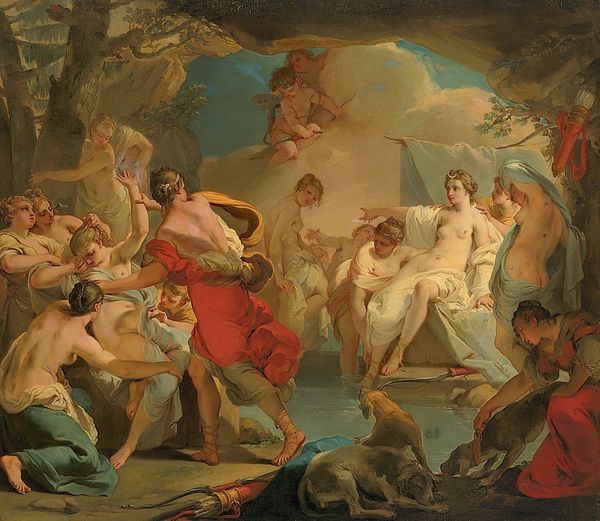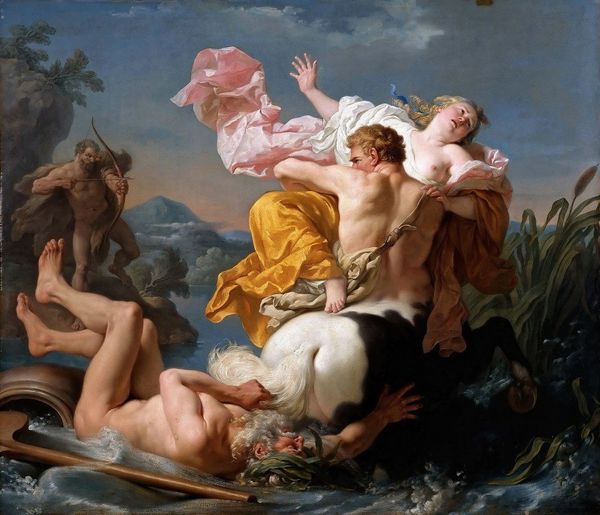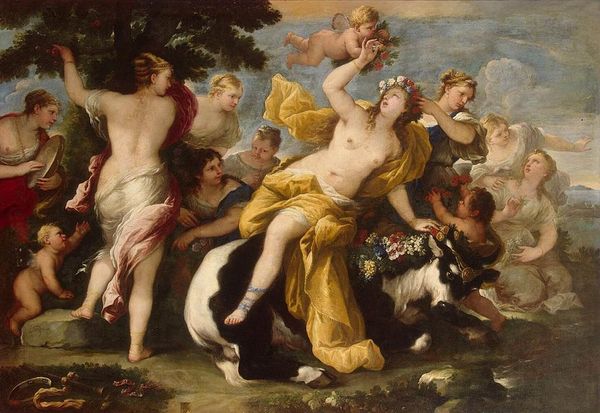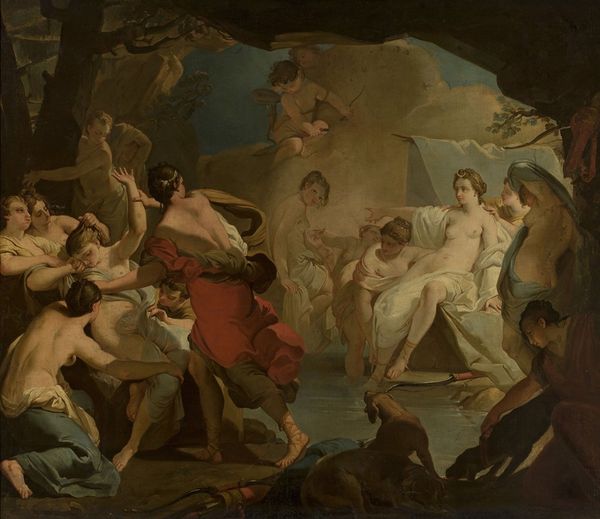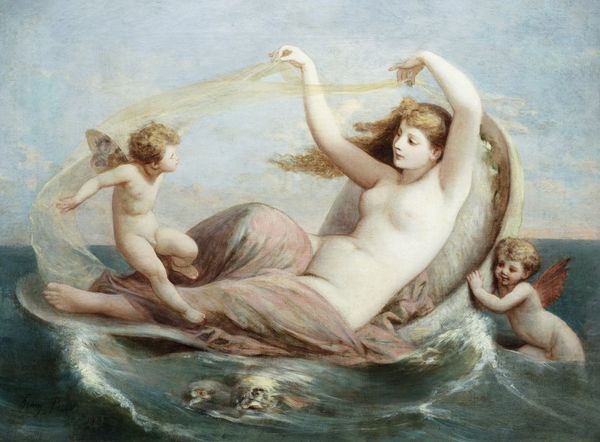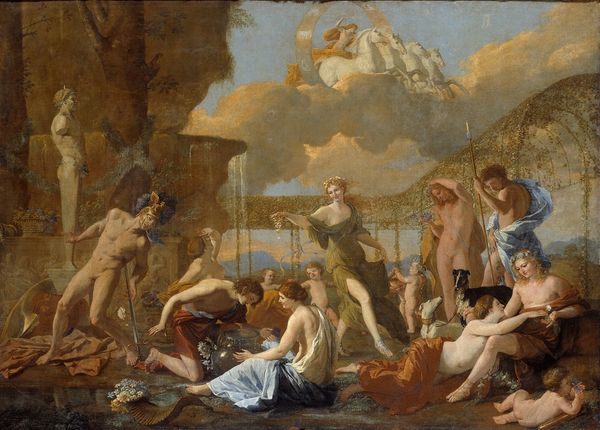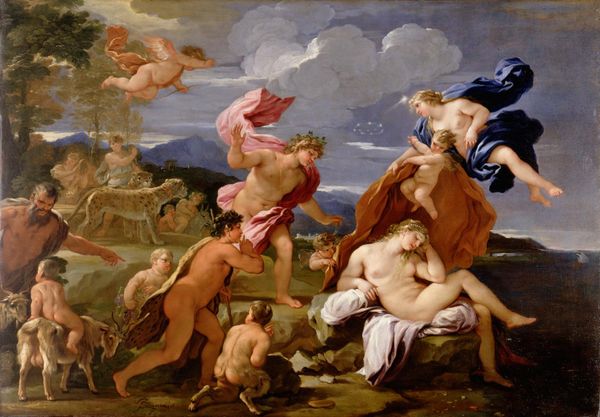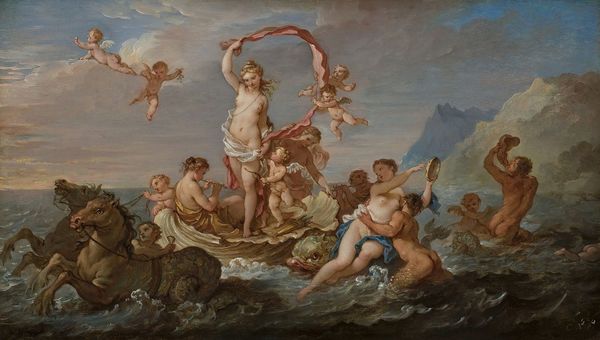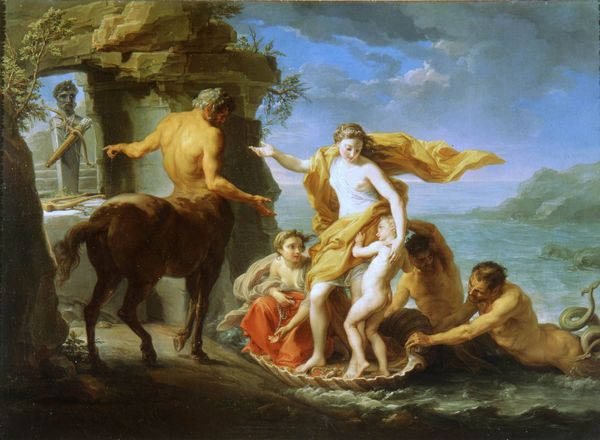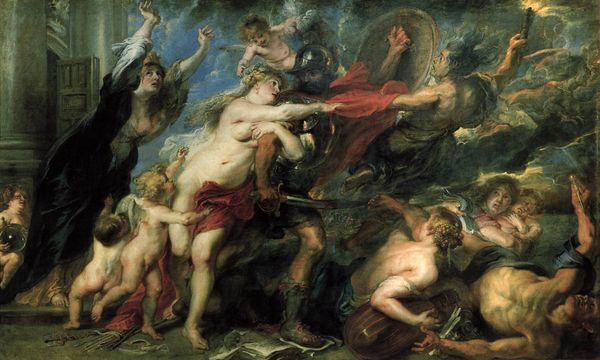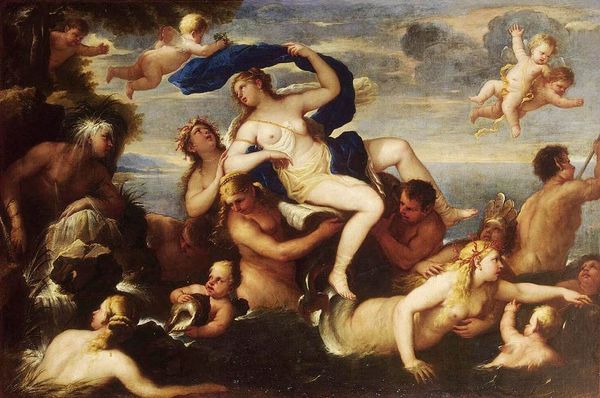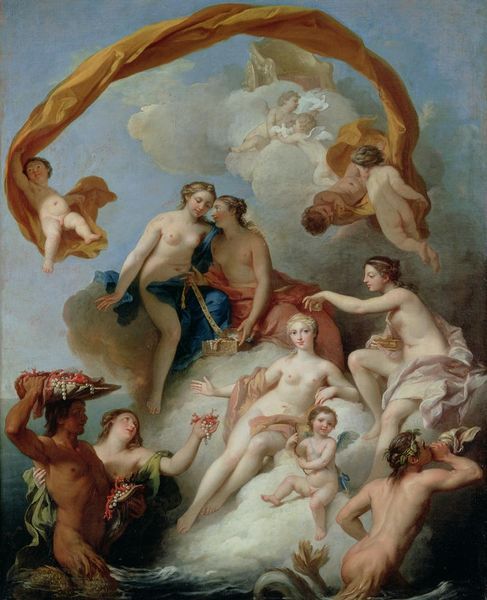
oil-paint
#
venetian-painting
#
allegory
#
baroque
#
oil-paint
#
figuration
#
oil painting
#
mythology
#
painting painterly
#
history-painting
#
nude
Copyright: Public Domain: Artvee
Curator: This ebullient canvas is Sebastiano Ricci's "Triumph of The Marine Venus," painted in 1713. What catches your eye first about it? Editor: Definitely the churning sea. The textures created with oil paint alone really give a sense of the physical labor involved. It makes me consider the socio-economic background of Ricci himself. Did his status enable such artistic pursuits? Curator: The sea does almost bubble with energy. I’m drawn more to Venus herself. The central goddess acts as a symbol of idealized beauty and power; her serene pose stands in stark contrast to the turbulent water. The continuity of such iconographies across centuries is astounding. Editor: Idealized maybe, but idealized *for whom*, I wonder. Consider the pigments: how were they sourced and what was the economic exchange behind those choices? Did Ricci have access to the finest ultramarine because of his patrons, and what did that say about the power structures of his time? Curator: Ultramarine does carry a specific historical weight, but I also see something universal in the mythological tableau. The swirling composition pulls you into the narrative of Venus's rise from the sea. Those cherubs add to the sense of buoyancy and classical delight. It’s pure Venetian painting, wouldn’t you say? Editor: True, the medium certainly echoes its location. All that glorious light likely references Venetian glass making techniques, a unique craft that relied heavily on the skill and resources of its artisans. Curator: Precisely! So it’s about more than just aesthetic values then. Symbols layered upon materiality. Venus’ presence resonates not just as beauty, but embodies a cultural moment, a specific story of creation and dominance visualized through art. Editor: And constructed by human hands. I am left wondering how many different workshop members had to lend their unique skills to this single ‘master’ piece. Curator: So perhaps both viewpoints add richness to appreciating its continuing artistic presence and value. Editor: Agreed, from labor to iconography; the beauty certainly comes from many sources!
Comments
No comments
Be the first to comment and join the conversation on the ultimate creative platform.
